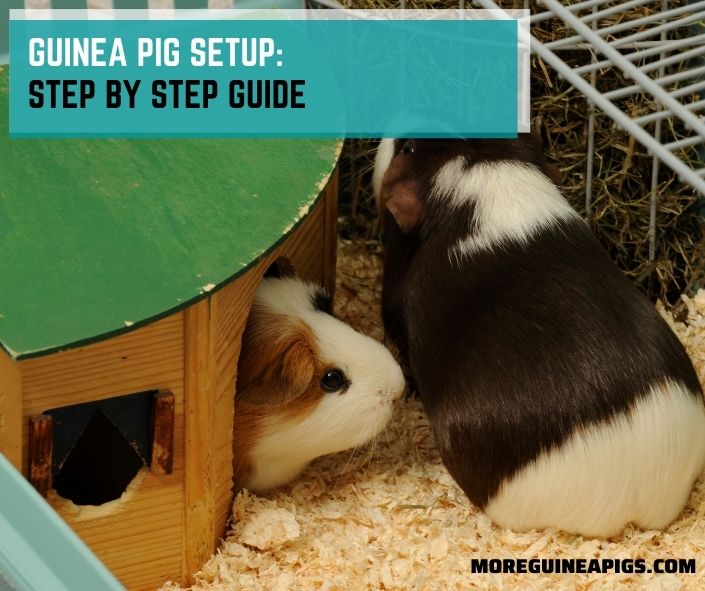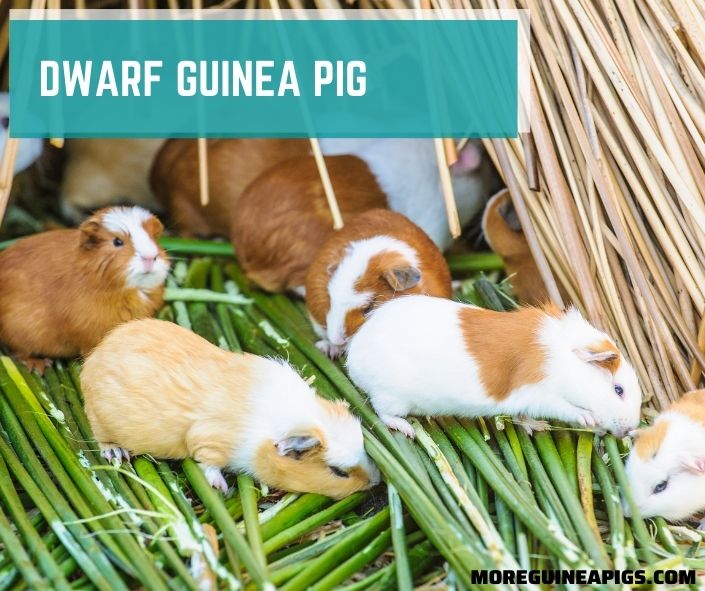How To Setup A Guinea Pig Hutch: Step By Step Guide
Keeping a guinea pig as a pet is fun, but it requires some preparation. The most important part of the preparation is to buy or make a cage because guinea pigs have special housing requirements.
If you are wondering where to get started, keep reading. This step-by-step guide will help you get ready for the arrival of your furry baby.
Step By Step To Setup A Guinea Pig Hutch
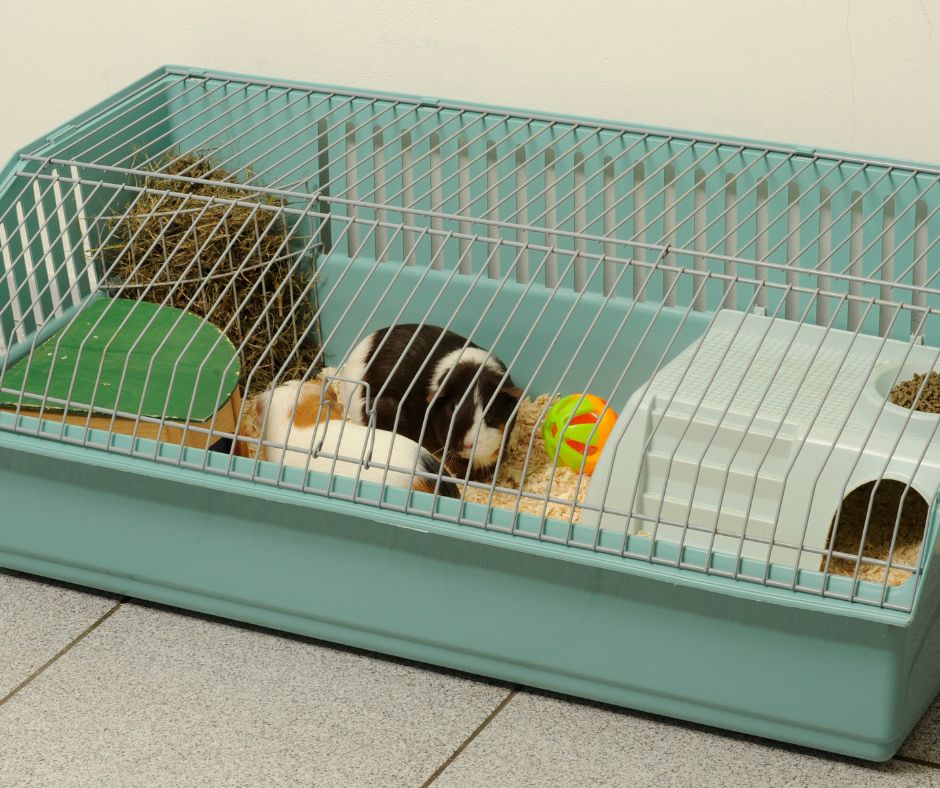
The ideal case for a guinea pig is one in which the animal can run and play comfortably. The cage should be spacious and sturdy. Make sure the enclosure is at least 100 cm long and 80 cm wide.
It should have a sleeping area and safe hiding places such as tunnels made from cardboard boxes. Do not keep the cage outdoors if the temperature drops below 15 degrees Celsius. Replace water regularly and keep it away from heat sources.
It may sound like a lot of work, but the procedure should not be complicated or time-consuming. Follow the steps below to make an ideal enclosure for your piggy.
Step 1: Choosing a Cage for Guinea Pig
Whether you want to buy a ready-made cage or take the DIY route, you have several different options. When choosing a cage for your piggy, two important factors should be taken into consideration: the size and the material. Let’s dive a little bit deeper.
Types of Cages for Guinea Pigs
Options include hutches, coroplast cages, chicken coops, wire cages, and a rabbit runs. Make sure to avoid a flimsy pet store cage, a glass tank or aquarium, or a cage with a wire bottom. Most importantly, your piggy’s home must be predator-proof.
As you see, there are several options for your guinea pig’s case, and the cost can vary wildly, depending on your choice. A standard hutch will cost around $100.
Size of A Cage For A Guinea Pig
For two female guinea pigs, the cage must be at least 8 square feet. Use this standard to figure out the size of the cage. In mathematical terms, the equation is like this: size of the cage = number of guinea pigs x 4. For five guinea pigs, the cage should be 20 square feet, for example.
Male guinea pigs tend to engage in fights, and that’s why it’s good to make bigger cages for them. A large and spacious cage will allow your piggies to run around and have fun.
If you want to take the DIY route, the cost will come down significantly. You can build a pretty large and sturdy cage by spending as little as $20.
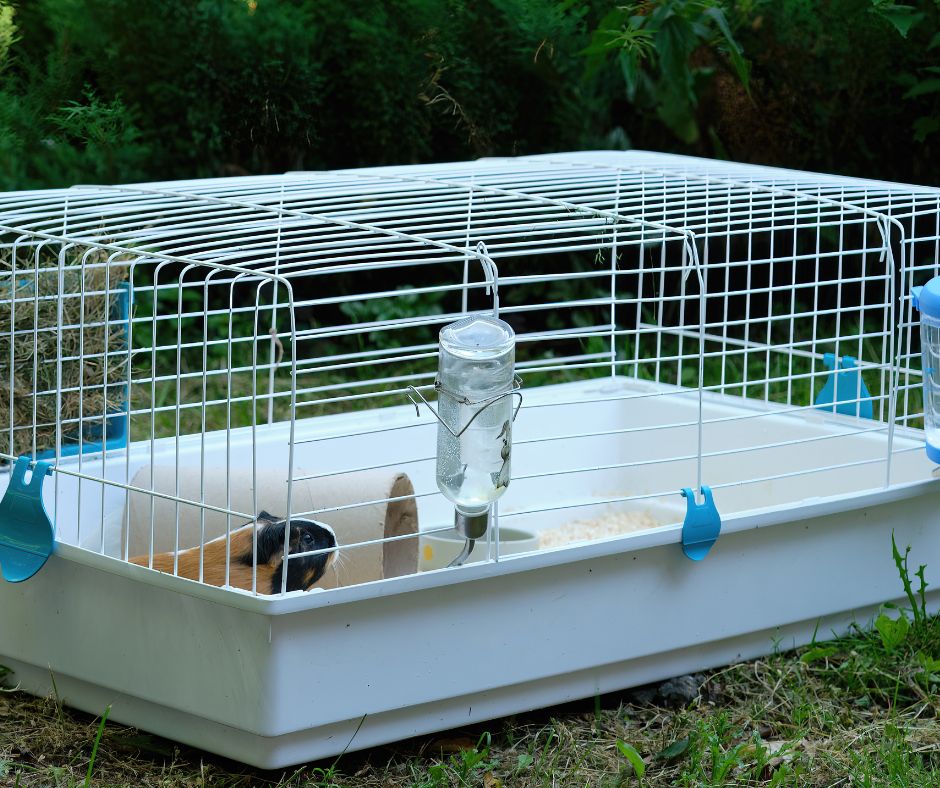
Step 2: Bedding For Your Guinea Pig
It’s important to ensure a proper type of bedding for the health and comfort of your piggy.
Guinea pigs are prey animals and they are easily frightened by threats or perceived threats. Bedding serves as a hiding place and makes them feel comfortable. Bedding also collects urine and makes spot cleaning a lot easier.
There are several options for your guinea pig’s bedding. First, you can buy some aspen wood shavings especially prepared for guinea pig bedding.
They are not aromatic, and that’s why they are preferable to pine wood shavings. A packet of Kaytee aspen wood shavings costs $10.99.
Paper-based bedding such as CareFresh is another great option, in part because it does not have harmful aromatic hydrocarbons. Prices range from $16 to $25.
You can also purchase some shredded paper from a pet store. To save costs,you can decide to shred paper. Paper doesn’t contain toxins, aromatic oils or hydrocarbons, and therefore is a safe material to use.
Now, let’s see what you should not use for guinea pig bedding. By all means, avoid toxic materials such as cedar or pine shavings, sawdust, corncob, newspaper, or straw.
Cedar and pine shavings can cause serious respiratory issues. When inhaled, sawdust can also cause respiratory issues.
Corn Cob has an abrasive texture that can cause discomfort, and newspaper can hardly absorb urine. The same goes for straw, which is not absorbent enough to be used as bedding.
Small Pet Select Natural Paper Bedding
Step 3: Ideal Temperature for Guinea Pigs
Just like humans, guinea pigs prefer moderate temperatures. The ideal range of temperature is 64°F to 73.°F. More than 75 degrees Fahrenheit is too hot for guinea pigs, and can cause various health hazards including heat stroke.
Consider getting a thermometer so that you can easily know the temperature of the room.
While they prefer cooler conditions, they can be at risk if the temperature drops below 15 degrees Fahrenheit. Guinea pigs are social animals and rely on each other to stay warm.
Therefore, rather than keeping just one guinea pig, consider getting more. The more, the merrier!
Step 4: Light for Guinea Pigs
Guinea pigs need sunlight. With that said, when it comes to exposing your piggie to direct sunlight, moderation is key. Exposing a guinea pig to direct sunlight for a long time can result in heatstroke.
Take your piggie outside in the mornings and evenings, when temperatures are not too high. In general, an hour of exposure to direct sunlight is enough.
If the cage is indoors and the room has a good level of visibility, you do not need to install extra bulbs in the cage. If the room is dark, you can install a bulb that provides sufficient light. Make sure the light is not dazzlingly bright.
Being crepuscular animals, guinea pigs do not go into a deep sleep. They remain active during the night, and when they sleep, they often keep their eyes open.
Guinea pigs prefer darkness because it allows them to move around without being seen. Contrary to what some guinea pig owners think, these animals do not need light during the nighttime.
Step 5: Water and Humidity for Guinea Pigs
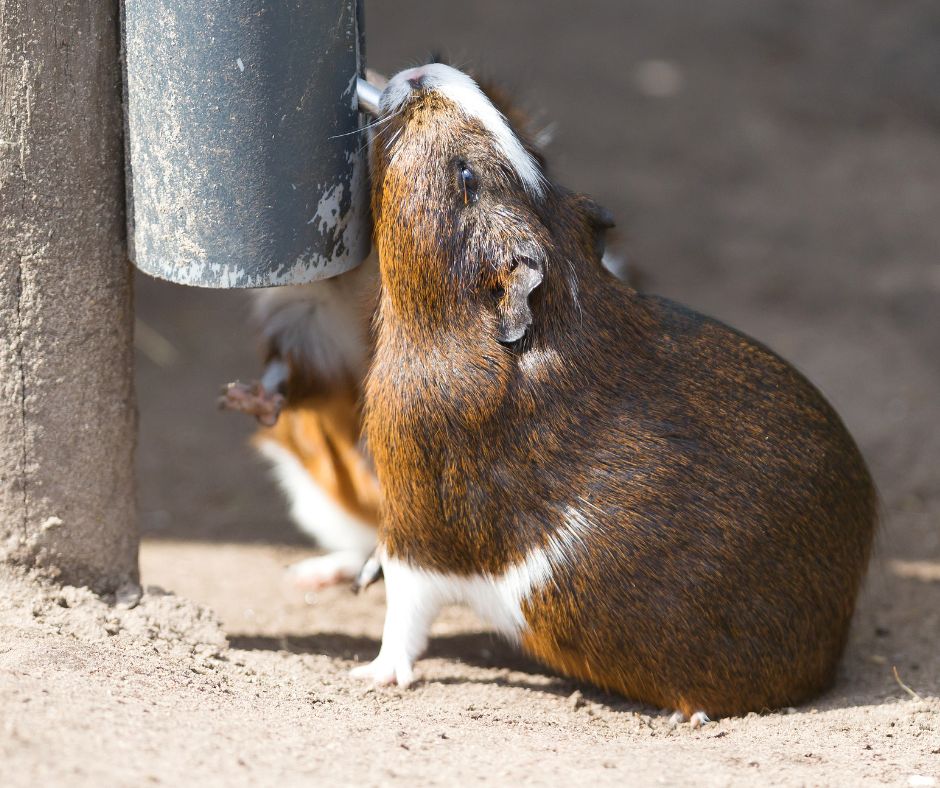
A healthy guinea pig normally drinks about 100 ml of water daily. That’s a lot of water for such a tiny animal!
To prevent water-borne diseases, clean the bottles and add water daily. Water bottles specially designed for guinea pigs are available on the market. Prices start at $6.
Even if you have a single guinea pig, install two bottles, to provide a backup in case one leaks or gets jammed. When you mount the bottles, make sure the nozzles are at a comfortable height. If they are too high, your piggy will have to strain to get a drink.
Water intake might increase or decrease depending on factors such as humidity, activity level, illness, and ambient temperature. If your guinea pig suddenly starts drinking an abnormally large amount of water, talk to a guinea pig-savvy veterinarian.
The room in which you keep your guinea pig should not experience fluctuations in humidity. The room should not be close to showers.
Avoid basements and laundry rooms in which humidity levels tend to be high. For housed guinea pigs, the recommended relative humidity is between 40 and 70%.
Step 6: Guinea Pig Accessories
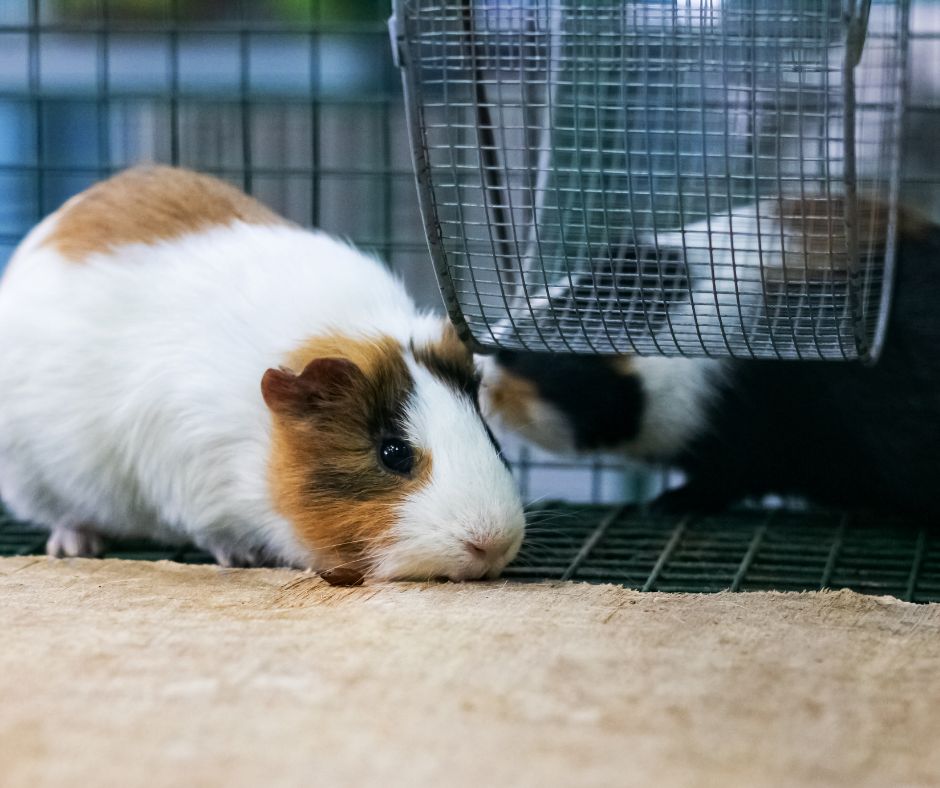
Before your furry baby arrives, make sure you have invested in at least the essential accessories. Here are the accessories you will need to feed and groom a guinea pig:
First, buy a non-leak water bottle designed for small animals. A water bowl can be an alternative, but it can attract dirt and mess, so you can stick to a bottle.
Purchase two food bowls: one for fresh fruits and vegetables, and the other for pellets. Instead of plastic bowls, consider investing in ceramic bowls, which are heavyweight and healthy.
Guinea pigs are prey animals, and they tend to hide from everything. So, consider purchasing some hideouts such as bridges, huts and shelters. They will help lessen your piggy’s stress levels.
Also, buy some cage toys like igloos, tunnels, hammocks, hay racks, cozies, and treat balls. Avoid wire balls, wood toys and toys that are a choking hazard. Make sure you get a wooden hay rack instead of a wire rack
Your guinea pig’s case should be cleaned at least once a week, and in some cases, daily. For this, you are going to need a dustpan, brush, antibacterial spray, some cloth, gloves, and bin bags.
There are also optional grooming products, such as nail clippers, hair trimmers, and a soft-bristled brush.
Grooming Kit with Pet Grooming Shedding Slicker Brush, Bath Massage Glove Brush, Nail Clipper, Flea Comb
Step 7: Find an Ideal Location For A Guinea Pig Hutch
Place your guinea pig hutch in a draft-free, bright room with a stable temperature. As we have already stated, there should not be fluctuations in temperature in the room. For the health and happiness of your guinea pig, place the hutch close to family activities.
An area near the dining room or kitchen is generally a good location for placing a guinea pig hutch. Do not put the cage directly on the floor, because guinea pigs are scared of activities such as footsteps, running, jumping, cleaning and vacuuming.
If you are thinking of setting up an outdoor hutch, find a suitable place to position the hutch. If the weather gets hot, move the hutch to a cooler area. Set up the hutch in a place that doesn’t receive too much direct sunlight. Do not position the hutch in a damp place.
How Much Is A Guinea Pig Set Up?
The total cost for a guinea pig set up will be around $200. It will cover food dishes, toys, water dispensers, shelters and more. After the initial setup, expect to spend around $40 per month for food, bedding and vet bills
How Many Guinea Pigs Should You Keep in a Cage?
Guinea pigs are social animals that live in groups of 10 or more in the wild. As pets, they can be kept in pairs. Two sows or two boars usually live happily together.
If you keep two boars, make sure they are of two different ages. If you keep a boar and a sow together, castrate the boar. However, don’t castrate the boar if you want to end up with many more guinea pigs!
For one or two guinea pigs, the cage should be at least 8 square feet. For three, a 12 square feet cage is preferable. For four, the cage should be 16 square feet.
As a rule of thumb, to find the appropriate size of the cage, you just have to multiply the number of guinea pigs with four.
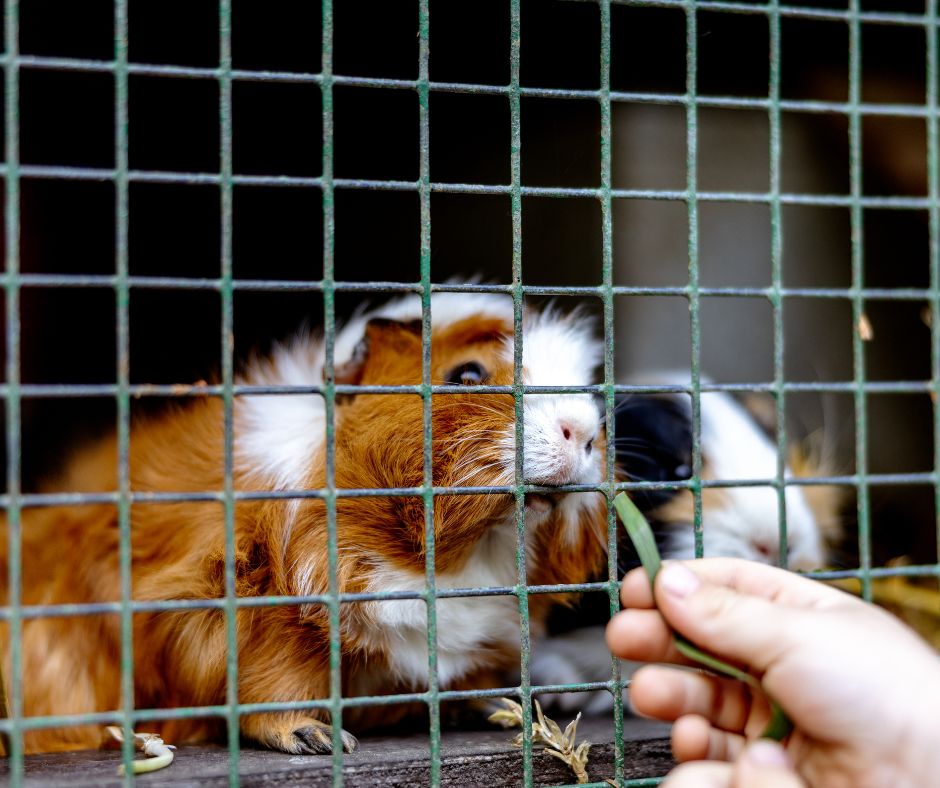
Wrapping Up
Setting up a guinea pig hutch is not that hard. With the right cage and accessories, you can get started pretty easily. The real challenge is everyday care and maintenance.
And no matter how good the setup is, your furry baby will initially dive under cover when you approach, and that’s fine. The little creature will soon become friends with you.
